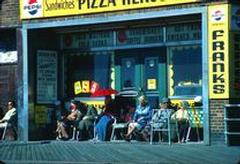JuryJAMES S. ACKERMAN, art and architectural historian, was educated at Yale and New York Universities. He began his teaching career at UC Berkeley, and in 1960 was appointed to Harvard University, where he retired in 1990 as Arthur Kingsley Porter Professor of Fine Arts. A prolific and pathbreaking scholar in the history of Renaissance architecture, Ackerman has published widely, including The Cortile del Belvedere (1954), The Architecture of Michelangelo (1961), Palladio (1966), and The Villa: Form and Ideology of Country Houses (1990). An anthology, Distance Points: Essays in Theory and Renaissance Architecture, was published in 1991, and a sequel is planned for fall, 2001. Ackerman was awarded the Balzan Foundation Prize 2001 for the History of Architecture for contributing to the modern approach to architectural history based on a systematic critical examination of written and visual sources. CHARLES CORREA, architect, planner, activist and theoretician, is a graduate of the University of Michigan and MIT, has been in private practice in Bombay since 1958. His work in India includes the Mahatma Gandhi Memorial at the Sabarmati Ashram, the Jawahar Kala Kendra in Jaipur, as well as many townships and public housing projects. Correa has addressed low-income housing and urban planning as well, and has been published extensively, including the recent monograph, Charles Correa(London: Thames & Hudson, 1996). Currently Correa is the Albert Bemis Professor at MIT, where he also is designing the Neurosciences Center. His many honors include the Gold Medal of the Royal Institute of British Architects, the Gold Medal of the UIA (International Union of Architects), the Praemium Imperiale from Japan, and the Aga Khan Award for Architecture. CONNIE OCCHIALINI, architect, lives and works in Milan. After working as a photographer and a graphic designer in Milan, she took a degree in architecture at the School of Architecture of Venice. Since 1976 she has been working with the International Laboratory of Architecture and Urban Design (ILAUD), which she directs together with Giancarlo De Carlo. Occhialini edits all ILAUD publications. In recent years her work as an architect has focused mainly on projects of urban design for a number of towns in Italy (Urbino, Siena, Catania, and Venice). She has taught at the Schools of Architecture of Venice, Ferrara (Italy), Halifax (Nova Scotia), at the Ecole Polytechnique of Lausanne (Switzerland), at the School of Humanities, University of Catania (Italy), and is a consultant to the Cultural Heritage Division of the Council of Europe. She also applies her graphic design experience to staging exhibitions and events. NICHOLAS RAY, architect and lecturer, received a Diploma in Architecture at University College, London, and an M.A. at the University of Cambridge. Principal since 1989 of Nicholas Ray Associates, in Cambridge, UK, he was formerly partner at Hughes and Bicknell Architects, Cambridge. Ray has practiced in Cambridge since 1973, where he has been particularly concerned with new buildings in conservation areas, and the adaptation of historic buildings. His most prominent building in Cambridge is Quayside, on the banks of the Cam opposite Magdalene College. In 1993 he became the founding director of the Cambridge Historic Buildings Group. He is the author of numerous articles in professional journals, and Cambridge Architecture - a Concise Guide (Cambridge and New York: Cambridge University Press, 1994). He is a Senior Lecturer and studio master in the Department of Architecture, University of Cambridge and is a Fellow of Jesus College. Additional Help and InformationAre you in need of assistance? Please email info@berkeleyprize.org. |
|

